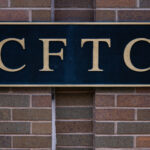Although spring flooding in North Dakota wasn’t as bad advertised in some areas, officials who are totaling the damages said Friday the costs are piling up. The question is whether the final figure will impress the federal government.
Federal, state and local experts have started preliminary damage assessments to come up with a bill that Gov. Jack Dalrymple can attach to a request for a presidential disaster declaration so counties that meet the minimum damage threshold can recoup some of the expenses.
It could be a tough sell.
“Obviously there were impacts and obviously there are going to be a lot of rural impacts,” said Cecily Fong, spokeswoman for the North Dakota Department of Emergency Services. “But whether it’s of the magnitude to be awarded a federal disaster declaration remains to be seen.”
The state’s largest city has the most to gain. The National Weather Service had predicted major flooding along the Red River and at one point warned Fargo residents to prepare for a record crest, but it failed to materialize because of an ideal melt cycle and limited precipitation.
That wasn’t before city officials ordered construction of 11 miles of temporary clay levees and placed about 100,000 sandbags.
Officials are surveying roads, bridges, culverts and other infrastructure damage in 18 counties and the Spirit Lake Indian Reservation. Early reports show costs of $2.5 million in Cass County, $503,000 in McHenry County, $250,000 in Richland County, $75,000 in Ward County, and $24,000 at Spirit Lake.
Federal Emergency Management Agency spokesman Jerry DeFelice, who’s in North Dakota to help with site inspection, said “there’s probably more than meets the eye” for damages in some areas.
“For example, we looked at three big washouts in Cass County, and I made the comment, like wow, this looks like a big failure here; a big project,” DeFelice said. “You have to look inside it a little bit and see what was done in the past and what would need to be done in order to restore it to pre-disaster conditions. We don’t improve sites.”
Some of the costs for flood prevention and cleanup can also be included for reimbursement, including labor for people who worked at Fargo’s Sandbag Central, a city storage facility where volunteers filled about 1.5 million bags. Fargo, which spent about $2 million on temporary flood protection “should be rewarded for the damages that were prevented,” DeFelice said.
A federal declaration sets reimbursement rates at 75 percent from the federal government and 25 percent between state and local jurisdictions. North Dakota has typically split the last share into 15 percent from the state and 10 percent local.
There’s no timeline on when the final assessment will be completed, DeFelice said.
“I think the fact that these communities are so good at tracking their efforts indicates that they feel like it’s worth their time and effort to recover some of their costs,” he said.
Was this article valuable?
Here are more articles you may enjoy.

 AI Weather Models Promise Super Granular, Specialist Forecasts
AI Weather Models Promise Super Granular, Specialist Forecasts  Nearly 24 Firms Seek Deal With CFTC to Settle Enforcement Cases
Nearly 24 Firms Seek Deal With CFTC to Settle Enforcement Cases  NYC Tourist Helicopter Crashes in Hudson River, Killing Six
NYC Tourist Helicopter Crashes in Hudson River, Killing Six  In Fight Over Insurance, Neighbors Crowdsource LA Fire Contamination Data
In Fight Over Insurance, Neighbors Crowdsource LA Fire Contamination Data 